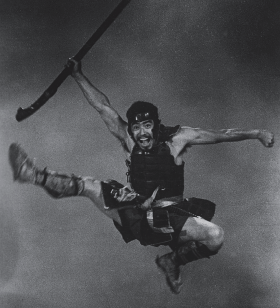Movies and Film: Film Acting vs. Theater Acting
Film Acting vs. Theater Acting
Director's Cut
Film historians agree that it was D. W. Grffith who first experimented on a large scale with a mode of acting that would suit the cinema rather than the theater. Recognizing that theatrical acting—with its exaggerated gestures, its over-the-top facial expressions, and its stilted body movements—often looked ridiculous on film, Griffith put his company of actors and actresses through weeks of meticulous drills and exercises to show them how to alter their skills and adapt them to the new medium.
With the advent of film in the early twentieth century, and in particular with the introduction of sound in the late '20s, there was a need for a new kind of acting style from that which had dominated the stage and the theater for centuries. Thus was born the art of film acting, a demanding and innovative discipline that has now been around for almost a century. Here are four of the main differences between stage and film acting:
- Unlike the theater actor, who gets to develop a character during the course of a two- or three-hour performance, the film actor lacks continuity, forcing him or her to come to all the scenes (often shot in reverse order in which they'll ultimately appear) with a character already fully developed.
- Since film captures even the smallest gesture and magnifies it 20 or 30 times, cinema demands a less flamboyant and stylized bodily performance from the actor than does the theater.
- The stage is more friendly to the unattractive, the overweight, and the flawed, while film—despite the advantages of makeup, lighting, soft focus, etc.—is relentlessly cruel to any sign of imperfection in the actor or actress.
- The performance of emotion is the most difficult aspect of film acting to master: While the theater actor can use exaggerated gestures and exclamations to express emotion, the film actor must rely on subtle facial ticks, quivers, and tiny lifts of the eyebrow to create a believable character.
In short, film demands a fundamentally different kind of performance work from its actors than does the stage; as D. W. Griffith himself put it, the stage actor projects an emotion or a character to an audience, whereas a film actor must in some way embody and perform these emotions in as true and believable a way as possible. Though some have made the theater-to-cinema transition quite successfully (Olivier, Glenn Close, and Julie Andrews, for instance), others have not, and there are many examples of silent stars who fell off the movie planet after sound was introduced. They just weren't able to compete with the bell-voiced theater actors who instantly flooded the studios.

Toshiro Mifune possessed one of the most expressive faces in world cinema; here he appears as one of Akira Kurosawa's Seven Samurai (1954).
Excerpted from The Complete Idiot's Guide to Movies and Film © 2001 by Mark Winokur and Bruce Holsinger. All rights reserved including the right of reproduction in whole or in part in any form. Used by arrangement with Alpha Books, a member of Penguin Group (USA) Inc.
To order the e-book book direct from the publisher, visit the Penguin USA website. You can also purchase this book at Amazon.com.







